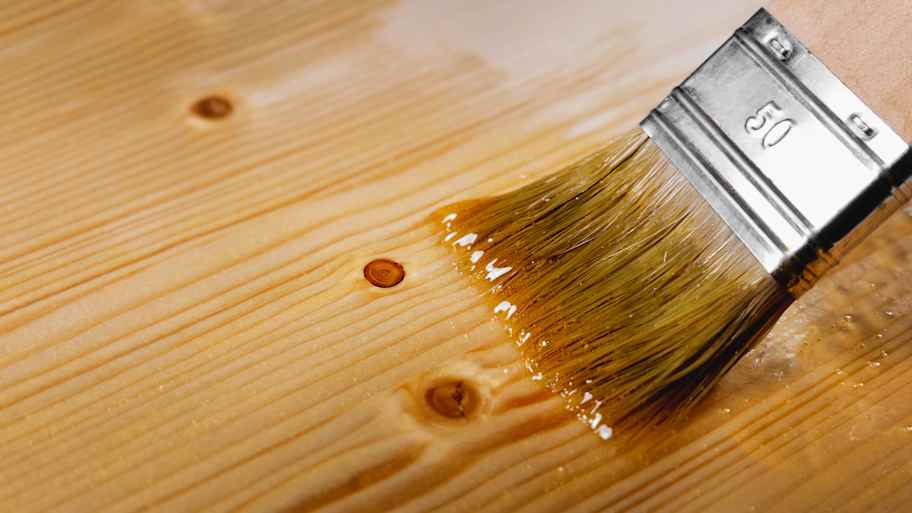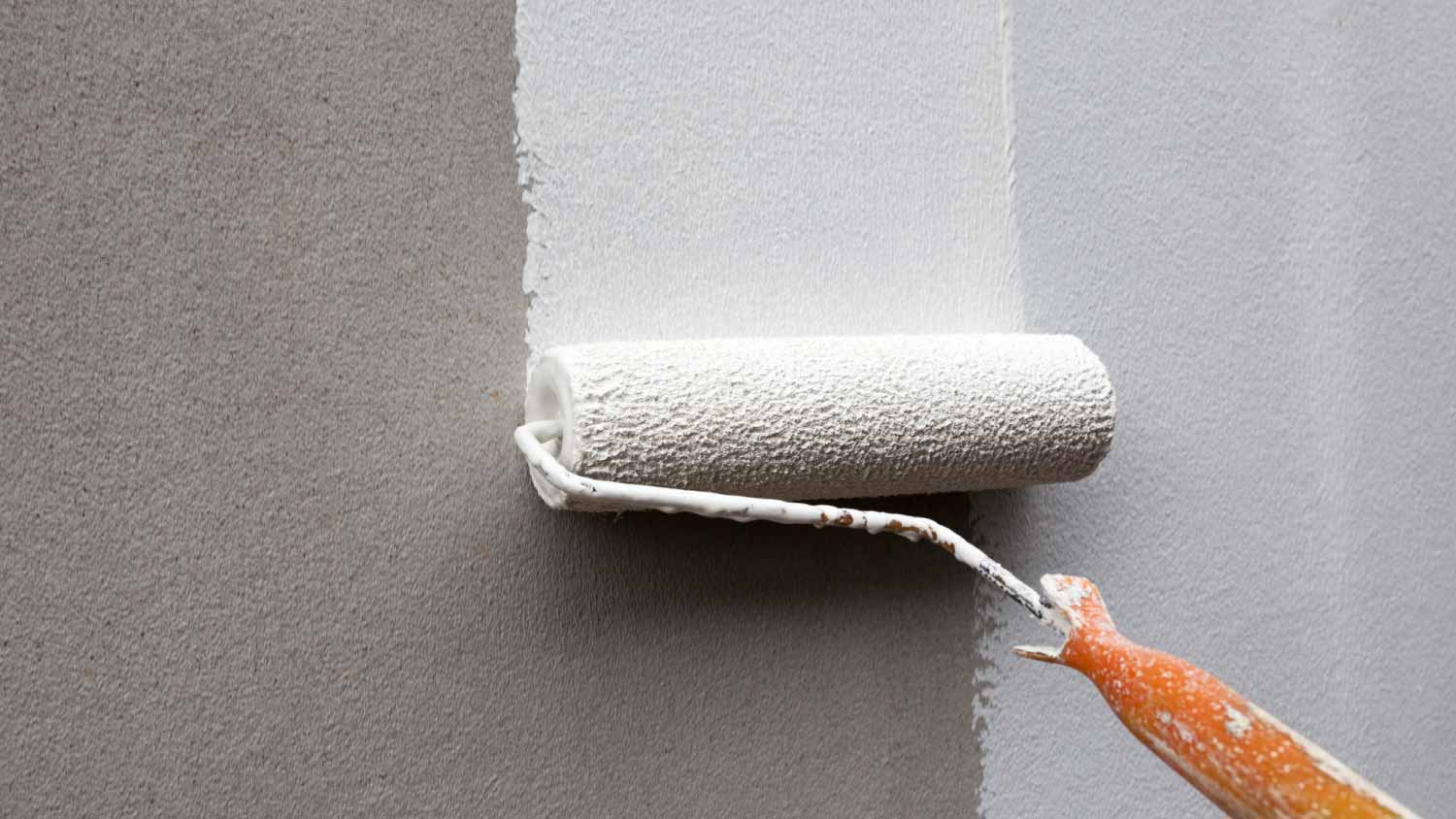
The cost to paint the interior of a house in Orlando, FL depends on size, layout, type of surface, and more. Learn what factors can influence your total in this guide.
Take wood from bland to grand


Oil-based stains penetrate more deeply than water-based stains to deliver a richer shade to the wood.
Choose water-based stains for indoor projects and oil-based stains for outdoor or high-traffic areas.
Water-based stains win out as a more environmentally friendly stain option.
Oil-based stain is more expensive per gallon, costing $35 to $120.
Water-based stains cost less, at $20 to $90 per gallon.
As you prepare for your next wood staining project, you may consider oil-based versus water-based stain. The choice between the two types of stain can make a big difference in your project’s look, performance, and long-term upkeep. Whether you’re tackling an outdoor deck, refinishing furniture, or working on an indoor DIY, understanding the pros and cons of each will help you pick the right stain for the job.
Oil-based and water-based stains each enhance the look of wood, and both are popular types of exterior wood stain. Oil-based stains penetrate deeper, offering rich color and longer-lasting protection. However, they take longer to dry and have a strong odor when applying. Water-based stains dry quickly and are more environmentally friendly, but won't soak in as deeply or last as long as oil-based stains.
An oil-based stain is made with petroleum-based solvents that carry pigment and binders deep into the wood’s grain. They’re designed to highlight natural textures and tones while adding color. The stain delivers a warm, rich appearance that emphasizes the natural variations in the woodwork.
| Pros | Cons |
|---|---|
| Penetrate deeply | Long drying time |
| Highlights natural wood grain | Strong odor |
| Protects against moisture and wear | Tricky clean up |
Best for:
Outdoor surfaces like decks, fences, and patio furniture
High-traffic wood surfaces like stairs, floors, and handrails
Hardwoods like oak or mahogany
Oil-based stains deeply penetrate wood, resulting in rich, vibrant color that enhances the natural grain. This deeper absorption not only creates a beautiful finish but also helps protect the wood from the inside out. That’s why oil-based stains are especially popular for projects where durability matters, like decks, floors, or outdoor furniture. Fewer coats are needed to achieve a full, even look, which can save time during the application process (even if the drying time is longer).
Oil-based stains are more forgiving during application, especially on large or uneven surfaces. They provide a longer working time before drying, which means fewer visible lap marks or streaks if you're brushing or wiping by hand. The final look has a warm, traditional feel that many homeowners love, especially when working with hardwoods or reclaimed wood.
Drying time is one of the most frustrating parts about using oil-based stains. While water-based stains can dry within an hour or two, oil-based stains take several hours or up to a full day to dry. This slower dry time can delay your project, especially if multiple coats are needed. The fumes can be quite strong, requiring proper ventilation or a respirator mask during indoor use. For those sensitive to odors, hiring a local professional painter is a smart choice.
Cleanup is another hurdle, because instead of washing up with soap and water, you'll need mineral spirits or paint thinner to clean brushes, spills, or hands. Oil-based stains also release higher levels of volatile organic compounds (VOCs), which may be restricted or discouraged in some areas due to environmental regulations. Some oil-based finishes may yellow slightly or darken, which can affect lighter woods or precise color matching.

Water-based stains use water as the primary solvent to deliver color and pigment across the wood’s surface. Instead of soaking deep into the wood grain, they sit closer to the surface for a more uniform appearance and crisp, consistent color.
| Pros | Cons |
|---|---|
| Dries quickly | Doesn't penetrate deeply |
| Environmentally friendly | Short working time |
| Easy cleanup | Less durable than oil-based |
Best for:
Indoor furniture like tables, chairs, and cabinets
DIY or beginner projects
Light-colored woods
The quick-drying formula of water-based stains is perfect for projects on a tight schedule or projects that need multiple coats. The stain's low odor makes it safer to use indoors, and thanks to its lower VOC content, it's more environmentally friendly than oil-based stains. You can ditch the harsh chemicals during clean-up and simply use soap and water.
This type of wood stain maintains its color well without the risk of yellowing. This helps preserve light tones and modern, clean finishes. They also offer greater control over color, producing even, predictable results. Even if you don't know how to stain wood, water-based stains are DIY-friendly for homeowners.
Because water-based stains don't penetrate wood as deeply as oil-based options, they may not bring out as much natural grain or character. This can make the finish feel more surface-level—especially on rustic or highly textured wood. The fast drying time can be a double-edged sword. While it's convenient, it also means less time to work with the stain, increasing the chances of lap marks or uneven application if you're not quick or careful.
The stain can raise the wood grain, which requires light sanding between coats for a smooth finish. Water-based stains aren’t always the best match for high-traffic areas or outdoor use without a top-tier sealant. You may also need more coats to achieve the same depth of color as an oil-based stain.
Oil-based stains bring out the natural grain and texture of wood more vividly, delivering a rich, warm, and dimensional finish. Their deep penetration creates a more traditional and natural look to the wood.
Both types come in a wide range of colors and finishes, from clear to heavily pigmented. While water-based stains offer more precise, consistent color tones, oil-based stains allow for layering and blending to create custom looks.
Oil-based stains last longer and provide stronger protection against moisture, wear, and UV damage. This makes them especially well-suited for exterior use and high-traffic areas like floors or decks.
The cost to stain a deck with oil-based or water-based stain can vary depending on the amount needed. While oil-based stain is more expensive per gallon, between $35 and $120, it requires fewer coats. Water-based stains cost less, at $20 to $90 per gallon, but may require more coats to get the finish right.
Water-based stains are easier to touch up, reapply, or clean, especially indoors. They’re less prone to trapping dirt and dry, which makes ongoing maintenance simpler and more convenient.
Water-based stain doesn't produce as strong an odor as oil-based stain, making it better for indoor air quality. Similarly, this type of stain has lower VOC levels and less of an impact on the environment.
Both stain types can boost resale value when properly applied and maintained. The key is quality craftsmanship and matching the stain type to the application. Buyers care more about the final look and condition than the formula used.
How long it takes stain to dry is a big consideration, especially for DIY projects. Water-based stains dry significantly faster, within an hour or two, which is ideal for quick-turnaround projects or applying multiple coats in one day.
From average costs to expert advice, get all the answers you need to get your job done.

The cost to paint the interior of a house in Orlando, FL depends on size, layout, type of surface, and more. Learn what factors can influence your total in this guide.

The cost to paint the interior of a house in Columbus, OH depends on size, layout, type of surface, and more. Learn what factors can influence your total in this guide.

The cost to paint the interior of a house in Detroit, MI depends on size, layout, type of surface, and more. Learn what factors can influence your total in this guide.

Tired of your neutral-colored concrete countertops? Paint them for a fun DIY project that will totally transform your kitchen.

Wondering how much it costs to stripe a parking lot? Learn about average prices, key cost factors, and tips to save on your next parking lot striping project.

Paint on metal doesn’t have to be permanent. Learn how to remove paint from metal yourself with various household methods.